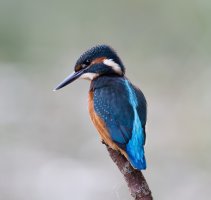An interesting way to calculate it, but not sure the assumptions are correct.
Some other data points to consider. There are just under 150 professional sports teams in North America and there are 350 Division 1 schools in the NCAA. So that's a total pool of 500 in all of North America. Schools smaller than Division I are not going to draw photographers using $10,000 lenses, if they draw any photographers at all (most likely local newspaper photographers and sports information office photographers.) Having shot at a small college for several years, I can count on one hand the number of other professional photographers I ran into at games in any given year. I met maybe four other photographers in the entire time that had equipment similar to mine (70-200 mm F2.8 lenses indoors and a 100-400 or 100-500 zoom outdoors). Never met anyone that had a big white.
At the top tier level (professional sports and NCAA Division I Universities) the photographers are not covering just one team in one city, but are traveling from city to city covering games. Of course, no one can be in two places at once and there are many photographers are these events, but still, you have to stretch things quite a bit to get to your 20 top tier sports photographers in every city of three million.
Of course, neither of us really knows.
But, I am more inclined to fall back on
@neuroanatomist 's assessment of the market, which is that the real money and real demand is always in wealthy amateurs who have disposable income and no need to balance the expense against earnings. I would also agree that this lens is probably more about Canon's image than it is about profits. (of course image does translate into profit.) The 200-400 and now the 200-500 is a highly visible lens on the sidelines of major sporting events and helps Canon retain it's image for the public that if you want to be a "real" photographer, you need a distinctive white lens.

